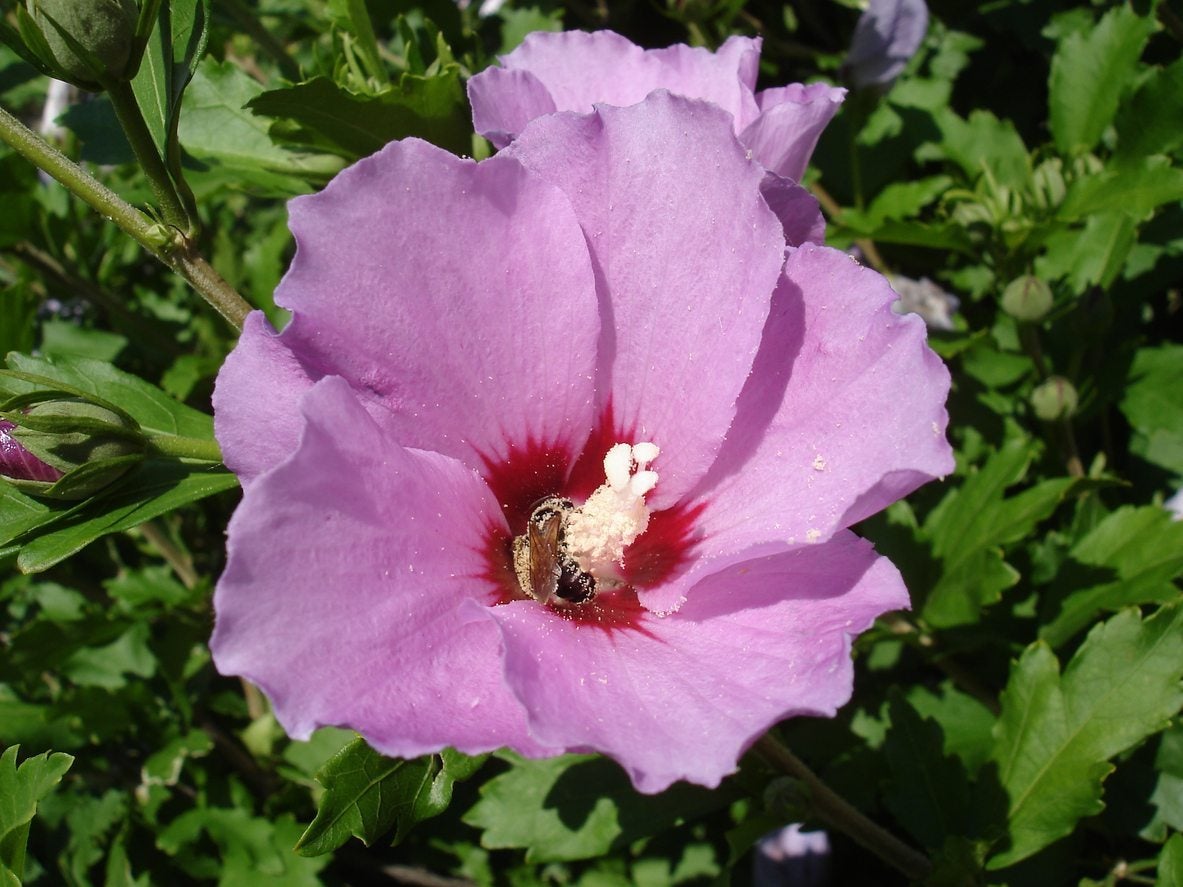Rose Of Sharon Problems - Dealing With Common Althea Plant Issues


Rose of Sharon, or althea shrubs as they are commonly called, are usually low maintenance, reliable bloomers in zones 5 through 8. However, like any other landscape plants, rose of Sharon can experience problems with specific pests or diseases. In this article, we will discuss common althea plant issues. Continue reading to learn about common rose of Sharon pests and diseases.
About Rose of Sharon Pests and Diseases
Both pests and diseases can afflict rose of Sharon plants at any given time.
Pests
Rose of Sharon shrubs are much loved for their large, prolific, tropical-looking blooms in late summer. Depending on variety, these blooms come in a wide range of color and may be single or double. Besides gardeners, these blooms are attractive to bees, butterflies, and hummingbirds. Unfortunately, Japanese beetles are also very attracted to the lovely blooms too. One of the most troubling rose of Sharon problems, these pests can cause large holes or leave nothing but skeletonized remains. Some other common pests of rose of Sharon are root knot nematodes and aphids. Systemic insecticides can help prevent many of these pests when applied annually in spring. Root knot nematode damage may appear as wilting or drying up plants. These nematodes cause knots or galls to form on the underground roots of rose of Sharon. The galls disrupt the plant’s ability to take up water or nutrients, causing the aerial parts of the plant to slowly die. Aphids are a troublesome pest of many plants. Not only do they quickly infest a plant and suck it dry, but they also leave behind a sticky honeydew. Aphid honeydew attracts ants and other insects but also traps fungal spores on their sticky surfaces, leading to fungal infections of plant tissues, specifically sooty mold. Frogs, toads, and ladybugs are excellent allies in keeping insect pest populations under control.
Diseases
Rose of Sharon shrubs can be sensitive to drought or waterlogged soil. Yellowing or browning leaves, dropping buds, wilting plants, or stunted growth problems with althea oftentimes are caused by improper drainage in the planting site. Rose of Sharon shrubs need well-draining soil and regular watering in times of drought. Throughout southern regions, flower bud drop can be a common althea problem when plants are not properly watered. Leaf spot and leaf rust are other common rose of Sharon problems. Leaf spot is a fungal disease caused by the fungi Cercospora spp. Its symptoms include circular spots or lesions on the foliage and premature dropping of leaves. Leaf rust can also cause spotting of foliage; however, with rust, orange-rust colored fungal pustules will form on the undersides of the foliage. Both these fungal diseases can overwinter in garden debris, soil, and on plant tissues, re-infecting plants year after year. To end this cycle, cut back all infected plant tissues and destroy them. Then, in spring, spray plants and the soil around them with preventative fungicides. Some other, less common, althea plant issues include gray mold, powdery mildew, cotton root rot, and cankers.
Sign up for the Gardening Know How newsletter today and receive a free copy of our e-book "How to Grow Delicious Tomatoes".

Darcy is a former contributor to Gardening Know How. She is a professional landscape designer and gardening writer with experience in plant sales. An avid gardener, Darcy has a passion for sharing practical tips to help others grow.